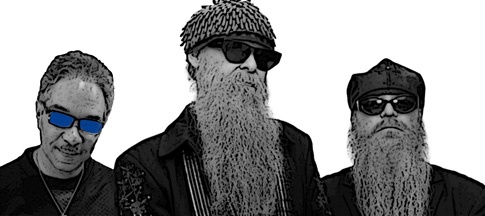Brian Powell

Brian has manufacturing responsibilities for our Emotion Mood Sensing Jewelry AquairiusTM and DavinciTM rings. A mood sensing ring allows a wearer's emotional state to be conveyed over a communications network via an ecosystem of emotive apps on a paired smart phone or other similar device. Each app is responsive to the emotional state of the wearer of the ring. Example emotive apps include mobile games, which adjust in difficulty based on the emotional state of a player, and music playing apps, which dynamically adjust the order of the music based on the mood of a listener.
Brian defines production and fulfillment processes including the following:
- Identifying and selecting ring materials and suppliers;
- Selecting contract jewelry manufacturers and assemblers;
- Receiving and performing quality inspections for finished goods;
- Retail packaging and shipping of jewelry; and
- Authorizing and handling returns.
Brian, an academically trained mechanical engineer, has 30-plus years of experience as a reliability engineer, study leader and project engineer regarding large scale metals manufacturing. He recently sat down for a Q&A regarding the production of a mood sensing ring.
Q: When you first saw the original 1970s mood ring design, what was your impression of it?
A: Good gosh, that takes me back to my childhood. I remember my baby sitter and cousin having them. Mood rings fascinated me. I remember rubbing the rings really hard to elicit a temperature change and color change. When I stopped rubbing, the ring would return to its previous color state. The mood ring reminded me of the weather indicator and thermometer that was in my grandmother’s house. It showed temperature and atmospheric conditions, including if it was raining or dry. Fair, or not, I made a connection between the mood ring and my grandmother’s weather indicator. I recall thinking that the [original] mood ring was an interesting piece of jewelry.
Q: Besides the mood ring, what else do you remember about the 70s?
A: It was a period of transition for me. I was already an automobile enthusiast, so it hurt when the speed limit was reduced from 75 miles per hour down to 55 miles per hour. My dad was in the military. We moved to Germany, where the autobahn has no speed limit. It [the autobahn] sounded like the Indy 500, and it was phenomenal. My musical interests varied from classical rock to arena rock: it was Abba; it was the Eagles; it was Boston; it was ZZ Top. Choppers were a passing fascination. I remember I had a mini-bike. I also remember jeans, bell bottom pants, loud plaids and needing to get a haircut—we definitely stood out in Germany. I was a full on geek.
Q: What were your thoughts upon hearing about the Emotion Mood Sensing Ring concept?
A: I thought, the project is very appealing in that it is a blend of technology and aesthetics—an eclectic mix, which suits my personality.
Q: What are you specifically working on?
A: I’m methodically looking at prototype development, manufacturing processes, schedule timelines, and budgetary compliance to assess the various risks [therein], as I have done so in the past, but, without allowing preconceived notions from the past to hinder me from making timely decisions, allowing us to more quickly execute.
Q: What is your biggest challenge?
A: On a personal level, it is transcending the metals industry that I have gained a lot of familiarity with over the course of time ... and, getting into something that presents different technological challenges. From an execution perspective, it is looking at all of the details associated with this particular project and understanding the critical path elements that need to be addressed. And, some of these things have competing priorities. It’s a matter of being able to figure out which of the items is the most critical on the path to move forward. At the moment, this boils down to addressing the manufacturability of the product, without the luxury of being able to explore all of the modes of failure. We are going to have to rely upon beta testing, to identify and correct customer perceived flaws as quickly as possible. We will in essence be leveraging the wisdom of the crowd, facilitated by input from social media.
Q: What convinced you to join the mood sensing ring project team?
A: The project is allowing me to work with people who are truly the best in their respective fields. It is allowing me to stretch, to get out of my comfort zone. I look forward to the meetings, to interacting with the team members. I’m enjoying contributing to what I believe is going to be a successful project overall.

